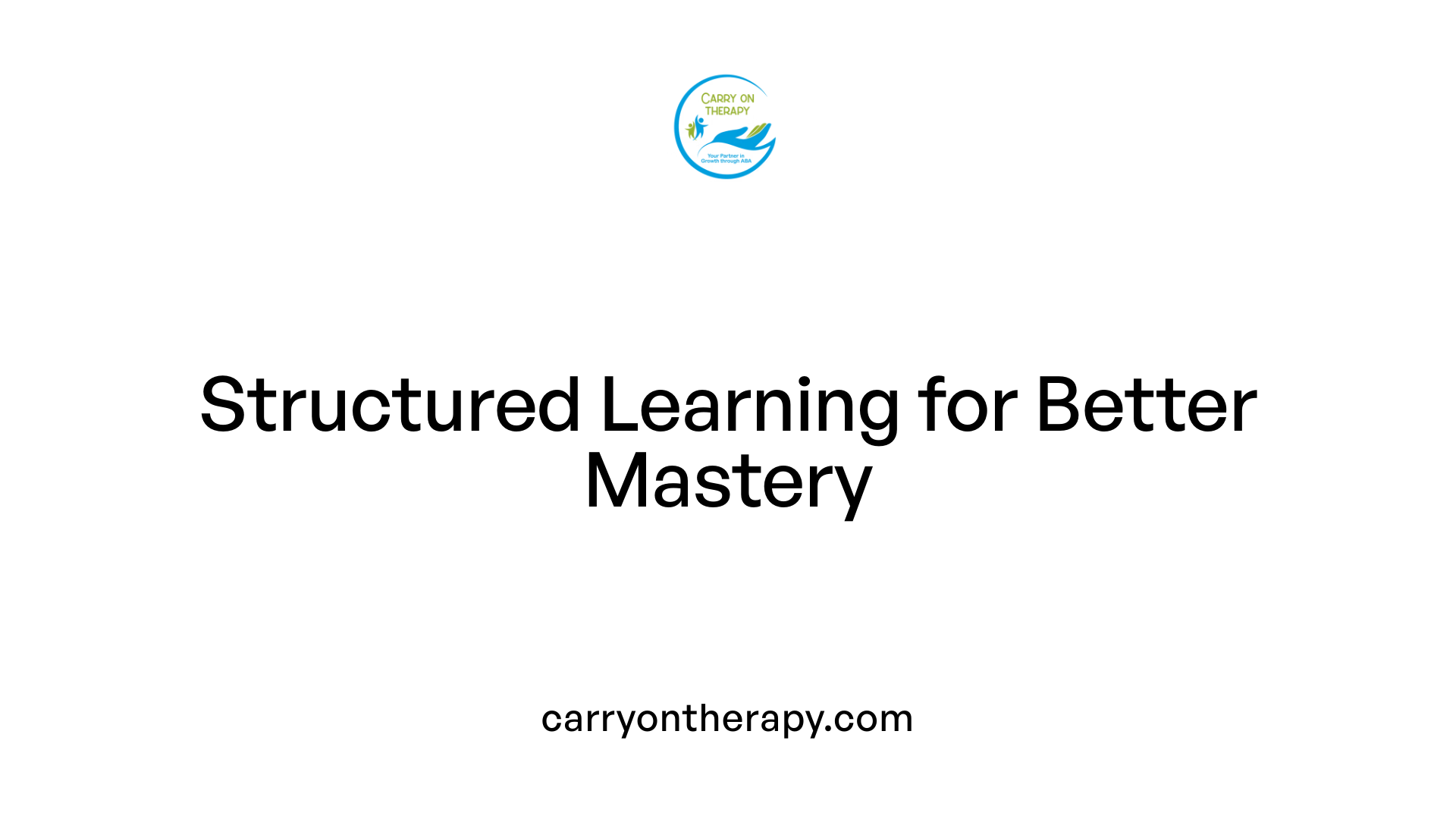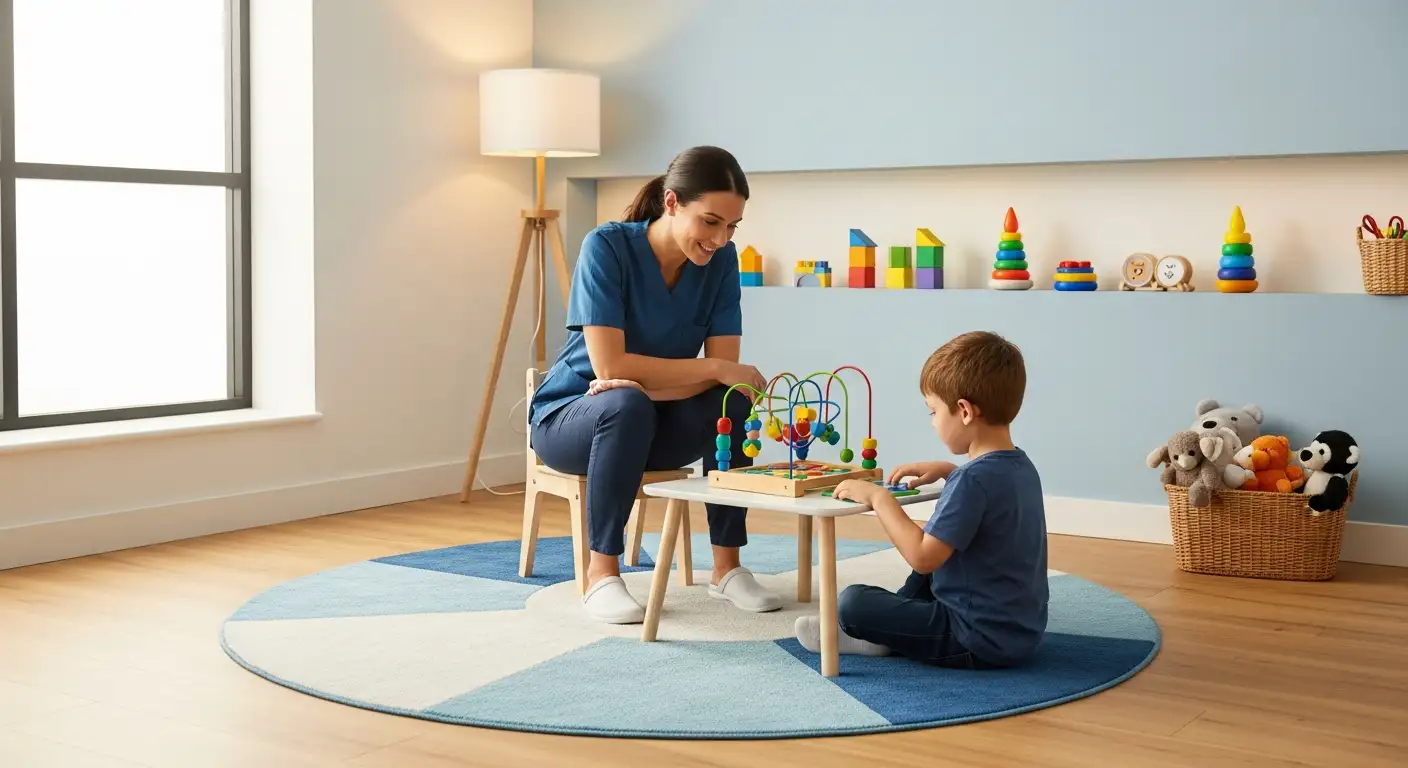Introducing Discrete Trial Training in Autism Therapy
Discrete Trial Training (DTT) stands as a cornerstone technique within Applied Behavior Analysis (ABA) therapy, offering a structured and effective method to teach new skills to children with autism. This article explores practical examples of DTT in action, illustrating how it supports skill acquisition through clear, step-by-step teaching paired with positive reinforcement. Understanding these examples illuminates the critical role DTT plays in the broader context of evidence-based autism interventions.
Fundamentals of Discrete Trial Training: Structure and Strategy

What is Discrete Trial Training (DTT)?
Discrete Trial Training is a specific teaching technique derived from Applied Behavior Analysis (ABA) therapy. ABA focuses on improving skills and behaviors in children with autism through evidence-based, structured methods. DTT breaks complex skills into small, manageable steps that are taught one at a time in a highly organized manner. Each teaching segment or "trial" includes a clear instruction, a prompt if needed, a response opportunity, and an immediate consequence.
What role do discriminative stimuli play in DTT?
Discriminative stimuli are consistent verbal or visual cues given at the start of each trial. They signal to the child which behavior is expected. By keeping these cues clear and unchanging across trials, they help the child understand what specific response is desired, making the learning process more efficient.
How are prompts and prompt fading used?
Prompts are supportive hints or assistance given to help the child produce the correct response, such as a model or partial guidance. These prompts are gradually faded as the child gains mastery, encouraging independence. This systematic reduction prevents prompt dependence and strengthens the child's ability to respond accurately on their own.
Why is repetition important in DTT?
Repetition allows the child to practice the targeted skill multiple times, enhancing retention and mastery. By repeating trials, children improve accuracy and fluency, which can eventually be combined to form more complex behaviors or skills.
How are positive reinforcement and correction applied?
Immediate positive reinforcement—like praise, tokens, or preferred items—follows correct responses to encourage repeating the desirable behavior. When a child responds incorrectly, a neutral correction or a brief pause to allow self-correction is used rather than punishment. This supportive approach helps the child learn from mistakes without frustration.
Through this structured process, DTT provides a clear, consistent, and adaptable framework for teaching a wide range of skills in a way that promotes learning, independence, and confidence.
How Discrete Trial Training Enhances Skill Development

Step-by-step Skill Breakdown
Discrete Trial Training (DTT) breaks down complex skills into small, manageable steps. Each skill is divided into discrete parts, making it easier for the child to learn. For example, teaching a child to identify colors might be divided into naming each color separately. Therapists provide a clear cue, or discriminative stimulus, to signal what is expected.
Example Teaching Scenarios
DTT can be applied across various areas:
- Language and Communication: Teaching a child to say a word or respond to a question with consistent prompts and immediate positive reinforcement.
- Social Skills: Helping a child learn to take turns by practicing this back and forth in structured trials.
- Daily Living Skills: Teaching steps to wash hands or button a shirt, breaking tasks into simple actions practiced repeatedly.
These scenarios illustrate how DTT creates a structured learning environment that encourages repetition and mastery.
Data Collection and Progress Monitoring
An essential part of DTT is recording data on the child’s responses during each trial. Therapists carefully track correct and incorrect responses to evaluate progress. This information helps tailor teaching strategies, fade prompts appropriately, and decide when to introduce more complex skills.
Building Complex Skills from Mastered Steps
Once a child masters simple steps, DTT allows these to be chained together to build complex behaviors. For example, after learning individual steps of hand washing, the child can be guided through the entire process. This gradual building fosters independence and confidence.
Common Techniques in ABA Therapy
ABA therapy uses several techniques to support learning:
- Positive reinforcement to encourage desired behaviors immediately after they occur.
- Prompting and prompt fading to assist learning while encouraging independence.
- Behavior chaining to teach multi-step tasks.
- Visual supports like picture exchange systems to enhance communication.
Overall, DTT's structured, repetitive approach combined with careful progress monitoring plays a critical role in teaching new skills effectively to children with autism.
Integration of DTT Within Broader ABA Therapy
Is ABA therapy evidence-based and effective for individuals with autism?
Yes, Applied Behavior Analysis (ABA) therapy is widely recognized as an evidence-based treatment for individuals with autism spectrum disorder (ASD). Extensive research, including numerous controlled studies and meta-analyses, has demonstrated that ABA can significantly improve communication, social skills, adaptive behavior, and cognitive functioning when implemented early and customized to individual needs. Modern ABA practices emphasize naturalistic and play-based approaches that promote independence and meaningful participation in daily life.
How does Discrete Trial Teaching (DTT) fit into ABA programs?
Discrete Trial Teaching (DTT) is a foundational ABA technique that fits seamlessly within broader ABA interventions. It involves breaking down complex skills into small, manageable steps and teaching these through structured, repeated trials. Each trial provides a clear cue or instruction, followed by an opportunity for the learner to respond. DTT’s structured nature helps increase attention and simplify learning, making it effective for teaching language, social skills, academic tasks, and daily living activities.
What role do positive reinforcement, prompt fading, and data-driven strategies play?
ABA therapy relies heavily on positive reinforcement to encourage desired behaviors. In DTT, immediate rewards such as praise or tangible incentives follow correct responses, strengthening skill acquisition. Prompts support learning initially and are gradually faded to promote independence. Additionally, meticulous data collection and progress monitoring guide the adjustments of intervention strategies, ensuring the program remains responsive to the child’s development.
How are ABA programs customized for individual needs?
ABA programs, including DTT, are highly individualized to address specific goals encompassing communication, behavior, academics, self-care, and social skills. Therapists design interventions based on detailed assessments, tailoring the pace, setting, and teaching techniques to the learner’s unique profile. This personalized planning helps optimize outcomes and promotes skill generalization across home, school, and community environments.
The Role of Professional Expertise in Implementing DTT

What types of professionals provide ABA therapy services?
ABA therapy is delivered by a specialized team of professionals. Central to this team are Board Certified Behavior Analysts (BCBAs), who design and oversee individualized treatment plans tailored to each child's needs.
Licensed therapists and behavioral technicians work under BCBA supervision to implement these plans using established ABA methods, including Discrete Trial Teaching (DTT). These professionals are trained in applying positive reinforcement and other evidence-based strategies to promote skill acquisition.
Collaboration with families and caregivers is another essential aspect of effective ABA therapy. Professionals actively engage caregivers to ensure that learned skills are practiced and generalized beyond clinical environments like home, school, or community settings. This approach supports long-term maintenance of improvements in communication, social skills, self-care, and academics.
Ensuring generalization and skill maintenance requires consistent data collection and monitoring. Experienced practitioners adjust programs based on progress, fading prompts as the learner gains independence. Their expertise enables them to break down complex behaviors into manageable steps within the structured framework of DTT, facilitating successful learning.
In summary, the qualified professionals delivering ABA and DTT services bring specialized knowledge of behavior analysis, applied learning techniques, and collaborative methods that are vital to the child's developmental success.
How DTT Differs from Other Autism Interventions
How does ABA therapy differ from other autism treatments?
ABA therapy, including Discrete Trial Teaching (DTT), distinguishes itself by focusing on observable behaviors and using data-driven methods to guide interventions. Rooted in behaviorism, ABA employs operant conditioning principles—such as reinforcement and prompting—to teach new skills and reduce challenging behaviors systematically.
Unlike other autism treatments, ABA emphasizes breaking skills into small, manageable steps and using repeated practice with immediate feedback. This structured approach is based on measurable results collected through continuous data monitoring, allowing therapists to customize and adjust programs for each individual's needs.
Comparison of ABA/DTT to other treatments
Other interventions, like cognitive-behavioral therapy (CBT), primarily focus on changing thoughts and emotions rather than directly modifying behavior. Occupational therapy, on the other hand, targets sensory processing and fine motor skills rather than discrete behavioral acquisition.
ABA’s reliance on behavioral principles, such as prompt fading and reinforcement, contrasts with these therapies, which may use different theoretical frameworks and techniques. Moreover, ABA is often applied broadly across multiple domains like communication, social skills, academics, and daily living, making it a comprehensive approach.
Use of operant conditioning and behavioral principles
In DTT, for example, therapists deliver clear cues (discriminative stimuli), provide prompts as needed, and immediately reinforce correct responses, which strengthens desired behaviors. Incorrect responses are addressed with neutral corrections or gentle guidance, encouraging error correction through learning.
This focus on observable and measurable behaviors ensures progress is tracked objectively, enabling effective skill-building over time.
Differences from therapies like CBT and occupational therapy
While CBT aims to help individuals manage emotions and thoughts, and occupational therapy targets sensory and motor functions, ABA —with methods like DTT—prioritizes skill acquisition through structured teaching of behaviors. This foundational distinction underlies ABA's extensive research support and its ability to tailor interventions specifically based on behavioral data.
| Therapy Type | Focus Area | Approach |
|---|---|---|
| ABA/DTT | Observable behavior, skill building | Data-driven, structured trials, reinforcement |
| Cognitive Behavioral Therapy (CBT) | Thoughts and emotions | Cognitive restructuring, emotional regulation |
| Occupational Therapy | Sensory processing and motor skills | Sensory integration, motor development |
The Vital Role of Discrete Trial Training in Autism Therapy
Discrete Trial Training exemplifies the power of structured, evidence-based approaches to teaching children with autism. Through its systematic use of clear instructions, repetition, prompt fading, and positive reinforcement, DTT fosters skill acquisition while promoting independence and confidence. When integrated into comprehensive ABA therapy programs delivered by trained professionals, DTT contributes significantly to improving communication, social abilities, and daily living skills. Its adaptability across settings further supports generalization, making it an essential tool in autism interventions that can transform lives.
References
- 5 Reasons Why Discrete Trial Teaching is Beneficial
- Effective ABA Therapy Examples & Strategies
- Discrete Trial Training Steps: ABA Therapy -
- The effectiveness of applied behavior analysis program ...
- Efficacy of Interventions Based on Applied Behavior ...
- The effectiveness of applied behavior analytic interventions ...
- The Controversy Around ABA
- Applied Behavior Analysis (ABA)
- The Top 10 Reasons Children With Autism Deserve ABA
You have to Start to be Great!






